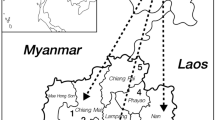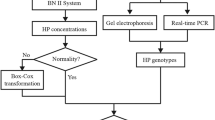Abstract
KURU is a rapidly progressive and fatal neurological disease found to occur with high frequency among the Fore natives in the Eastern Highlands of New Guinea. Their tribal area, of several hundred square miles, is in a remote and rugged part of the highlands which has only recently become accessible to Europeans. Between 20,000 and 30,000 people live in the area affected and, of these, about 1 per cent is afflicted with the disease at any one time. Altogether kuru is responsible for more than half the deaths of Fore females and about 10 per cent of males. Extensive studies have as yet failed to reveal evidence of any environmental or nutritional factor involved in the production of kuru1. The possibility of the Fore people having a genetical predisposition to kuru was first mentioned in 1957 2. Shortly afterwards, when a preliminary genetical study had been made, distinctive family patterns were found3,4, and it was then suggested not only that the disease had an important familial component but also that this was quite possibly based on a single gene locus. The genetical hypothesis, advanced tentatively, was that kuru is under the control of autosomal alleles Ku and ku such that in females the homozygotes KuKu and heterozygotes KuKu are early- and late-onset victims, respectively, while in males the homozygotes KuKuare KuKu victims but the heterozygotes are clinically normal. There are obvious weaknesses in basing inferences on genealogical data obtained from such primitive people through pidgin-English-speaking native interpreters. At the present time, however, this is the only way in which such material can be obtained. Nevertheless, it must be noted that the genealogical data gathered from many different parts of the affected region in extensive field studies during the past two years all exhibit essentially the osame distinctive family patterns5.
This is a preview of subscription content, access via your institution
Access options
Subscribe to this journal
Receive 51 print issues and online access
$199.00 per year
only $3.90 per issue
Buy this article
- Purchase on Springer Link
- Instant access to full article PDF
Prices may be subject to local taxes which are calculated during checkout
Similar content being viewed by others
References
Gajdusek, D. C., and Zigas, V., Amer. J. Med., 27, 442 (1959).
Zigas, V., and Gajdusek, D. C., Med. J. Australia, 2, 745 (1957).
Bennett, J. H., Rhodes, F. A., and Robson, H. N., Austral. Ann. Med., 7, 269 (1958).
Bennett, J. H., Rhodes, F. A., and Robson, H. N., Amer. J. Hum. Genet., 11, 169 (1959).
Bennett, J. H., Gray, A. J., and Auricht, C. O., Med. J. Austral., 2, 505 (1959).
Curtain, C., Austral. J. Sci., 22, 167 (1959).
Smithies, O., Biochem. J., 71, 585 (1959).
Giblett, E. R., Nature, 183, 192 (1959).
Matsunaga, E., and Murai, K., Nature, 186, 320 (1960).
Kirk, R. L., Lai, L. Y. C., Mahmood, S., and Singh, R. B., Nature, 185, 4707 (1960).
Blumberg, B. S., Allison, A. C., and Garry, B., Ann. Hum. Genet., 23, 349 (1959).
Budtz-Olsen, O. E., Med. J. Austral., 2, 689 (1958).
Author information
Authors and Affiliations
Rights and permissions
About this article
Cite this article
BENNETT, J., AURICHT, C., GRAY, A. et al. Haptoglobin and Transferrin Types in the Kuru Region of Australian New Guinea. Nature 189, 68–69 (1961). https://doi.org/10.1038/189068a0
Issue Date:
DOI: https://doi.org/10.1038/189068a0
Comments
By submitting a comment you agree to abide by our Terms and Community Guidelines. If you find something abusive or that does not comply with our terms or guidelines please flag it as inappropriate.



